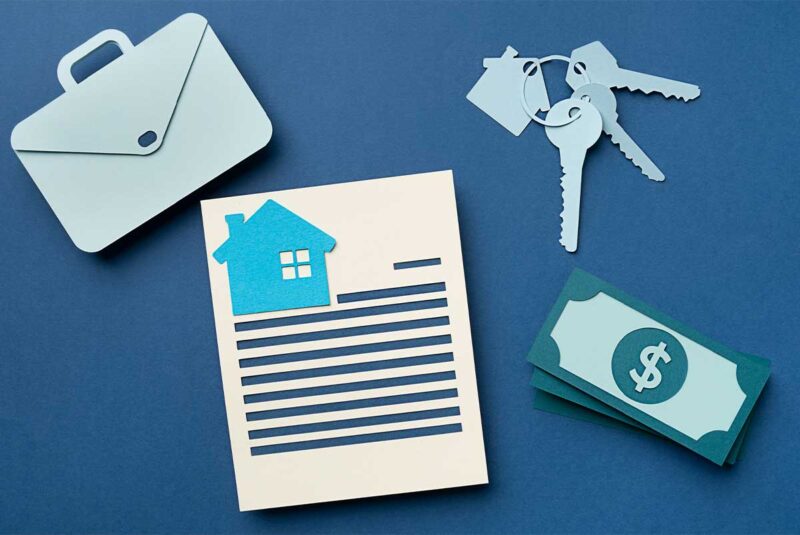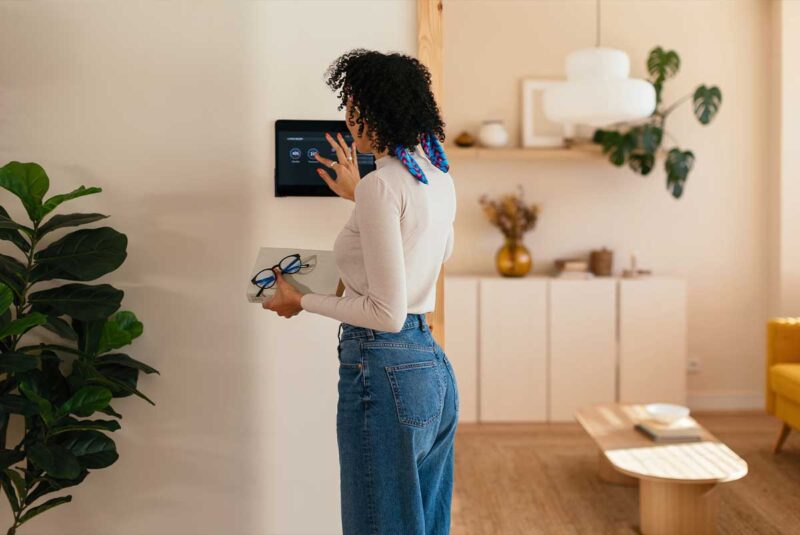Ready To Buy a Home?
Get Approved to Buy a Home
Rocket Mortgage® lets you get to house hunting sooner.
For most first-time home buyers, coming up with the money for a down payment is a major hurdle to homeownership. Sometimes you need to get creative while you’re trying to figure out how to cobble together enough cash for a down payment that’s 10% or 20% of a home’s purchase price.
There are lots of ways to get the money you need to make a down payment. But if you take out a loan or mortgage to fund the down payment on the house you’re purchasing, you have to share that information with your primary mortgage lender. If you don’t disclose the existence of the second mortgage or loan, you’ll have what is widely known as a silent second.
We won’t sugarcoat it: Silent seconds are risky and illegal. But we can still help you understand what they are, how they work – and their risks. If you need help finding less risky, totally legal down payment assistance options, we’ve got recommendations.
What Is a Silent Second Mortgage?
A silent second mortgage (or silent second) is a second mortgage on a home purchase that’s used to make a down payment but isn’t disclosed to the primary lender.
Only home buyers benefit from a silent second because it provides them with quick access to cash. For primary mortgage lenders, silent seconds complicate mortgages and make it harder for them to recover what they are owed on the loan if a homeowner defaults (which is not a great position for a homeowner to be in).
How Does a Silent Second Work?
A silent second works like any other loan. It’s only silent because the home buyer keeps quiet about the loan and never tells their primary mortgage lender about it.
Here’s an example of a silent second.
Let’s say you apply for a $400,000 mortgage and want to make an $80,000 down payment, but you only have $40,000 saved up.
In true “necessity is the mother of invention” fashion, you take out a second loan for $40,000 from a private investor. So you make the $80,000 down payment, but you keep it on the down low and never tell your lender half of the down payment came from a second loan, which makes the $40,000 loan a silent second.
Why Are Silent Second Mortgages Risky?
Silent second mortgages are risky for borrowers and lenders. Let’s start with the risks for borrowers.
Using a silent second is illegal. And in many states, it’s a felony offense.
Silent seconds also increase the likelihood of a borrower defaulting on their primary mortgage. Remember, in this scenario, you’re paying off two loans, not one. A second mortgage may make it harder to keep up with the payments on your first mortgage.
But silent seconds aren’t only risky for borrowers, they also pose a danger to primary mortgage lenders.
A lender will perform a thorough review of a prospective home buyer’s income, debt and credit profile to approve them for a loan. When a silent second is in play, a lender is approving a borrower for a mortgage with a potentially damaging financial blind spot.
In the event of a foreclosure, the primary lender may have difficulty taking ownership of the property because the lender who issued the silent second may have a lien on the property that also allows them to claim ownership of the property in case of loan default.
Silent Seconds vs. Second Mortgages
A silent second mortgage shouldn’t be confused with a second mortgage. Second mortgages – which are legal – are taken out in addition to primary mortgages, and are commonly used to access a homeowner’s home equity. The most common examples of second mortgages are home equity loans and home equity lines of credit (HELOCs).
What Are the Alternatives to Silent Second Mortgages?
Why risk your home and, potentially, your freedom? There are jail-free alternatives to silent second mortgages that can help you clear your down payment hurdle and purchase the home you want.
Low or no-money-down mortgage loans
Examples of low or no-money-down mortgage options include:
- Fannie Mae Community Seconds® and Freddie Mac Affordable Seconds®: These loan programs provide funding for up to 105% of a home’s purchase price. The additional 5% goes toward closing costs.
- First-time home buyer programs: Fannie Mae’s HomeReady® program and Freddie Mac’s HomeOne® program both help low-income first-time or repeat home buyers purchase a home for as little as 3% down.
- Government-backed loans: Federal Housing Administration (FHA) loans, Department of Veterans Affairs (VA) loans and U.S. Department of Agriculture (USDA) loans offer low or no-money-down loans for eligible borrowers.
Down payment assistance and closing cost assistance
Every state and locality offers its own down payment assistance programs. Visit the Department of Housing and Urban Development’s website to learn more about home buying programs offered through your state’s Housing Finance Agency (HFA).
One option is a soft second mortgage. These are assistance loans (they’re legal) offered through HFAs that work like a second mortgage and can be applied to your down payment and/or closing costs. The difference is that soft seconds are usually interest-free, and you don’t have to repay the loan until you sell or refinance your home.
Piggyback loan
Piggyback loans were popular in the early 2000s until the 2008 mortgage crisis. A piggyback loan is a second mortgage that’s taken out the same time you take out your first mortgage. The second loan, which is a smaller loan, “piggybacks” on the primary mortgage to help finance the home purchase.
In real life, it would look like an 80-10-10 piggyback loan. The primary mortgage would equal 80% of the home’s purchase price, the piggyback loan would fund 10% of your home’s cost (50% of your down payment) and you would pay the remaining 10% of the home’s value yourself.
Now, you might be thinking the 10% loan sounds a lot like a silent second, and the two do share some similarities. However, piggyback loans are sometimes offered by the lender issuing the first mortgage. If the buyer gets the second “piggyback” loan from a new lender, they must disclose the loan to their primary mortgage lender so the loan doesn’t become a silent second.
Benefits and drawbacks of piggyback loans
Piggyback loans are useful, but, like any other loans, they come with advantages and drawbacks.
PROS of Piggyback Loans👍
CONS of Piggyback Loans👎
Gift money
You’re allowed to accept gift money for a down payment. You should always disclose gift money to your lender, who may require a letter from your donor clarifying the money is a gift, not a loan. Talk to your lender to make sure you understand the rules on gift money for a down payment, which can vary based on the loan.
The Secret’s Out on Silent Seconds
If saving enough for a down payment feels like a major obstacle to finally owning a home, we can understand why you might consider taking out a silent second mortgage. But silent second mortgages are dangerous for home buyers. Taking out a loan that doesn’t accurately reflect your finances may end up costing you the home you wanted so badly.
If you’re struggling to save for a down payment, there are legal alternatives to silent seconds that can unlock the door to homeownership.
Get approved to buy a home.
Rocket Mortgage® lets you get to house hunting sooner.
The Short Version
- A silent second mortgage (or silent second) is a second mortgage on a home purchase that’s used to make a down payment but isn’t disclosed to the primary lender
- Only home buyers benefit from a silent second because it provides them with quick access to cash. For primary mortgage lenders, silent seconds complicate mortgages
- There are legal alternatives to silent second mortgages, such as down payment assistance programs, piggyback loans and low or no-money-down loans




